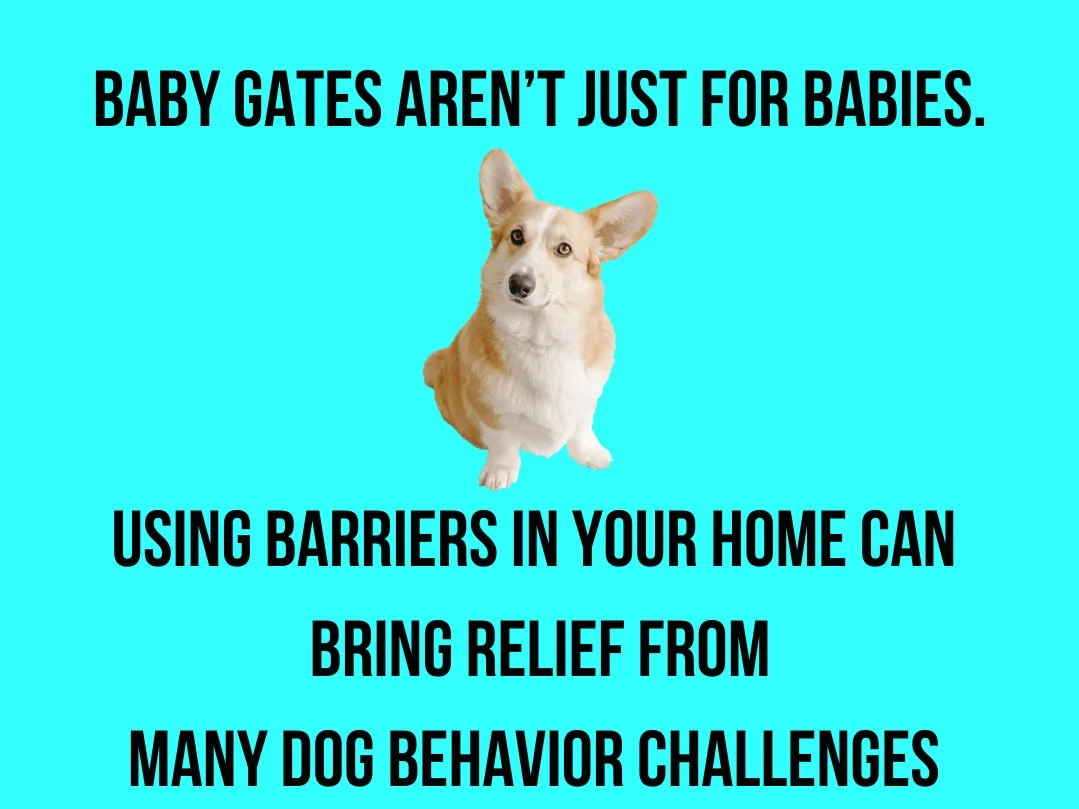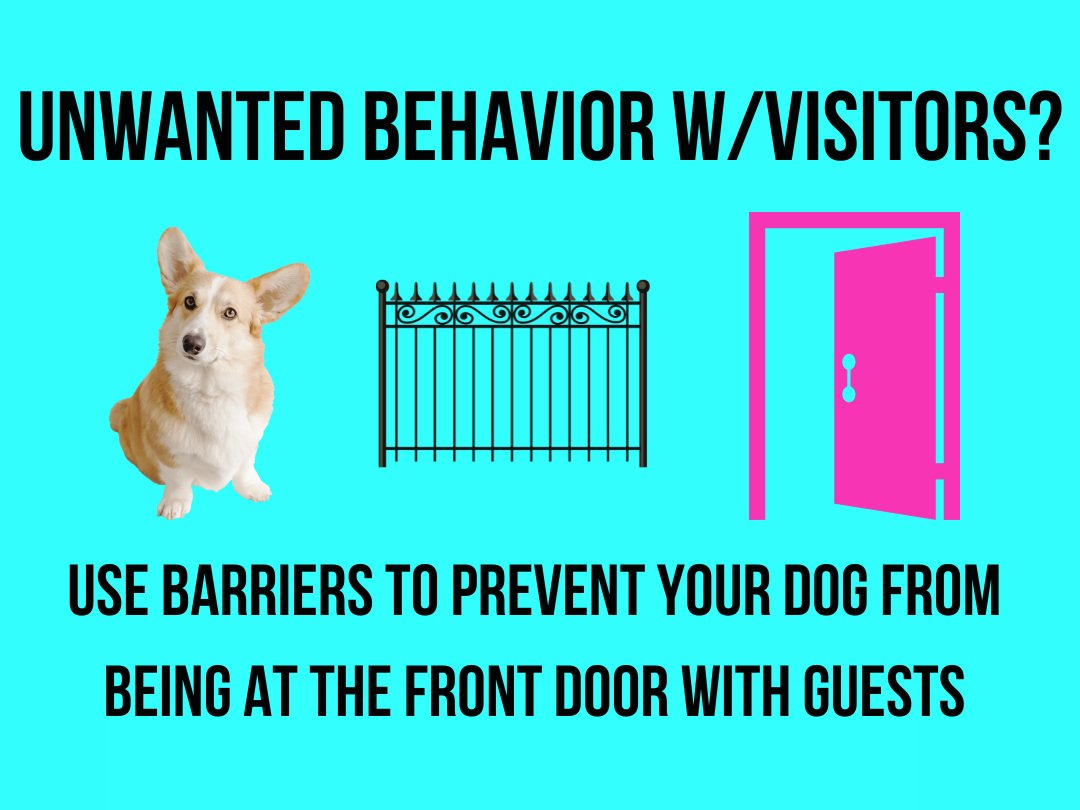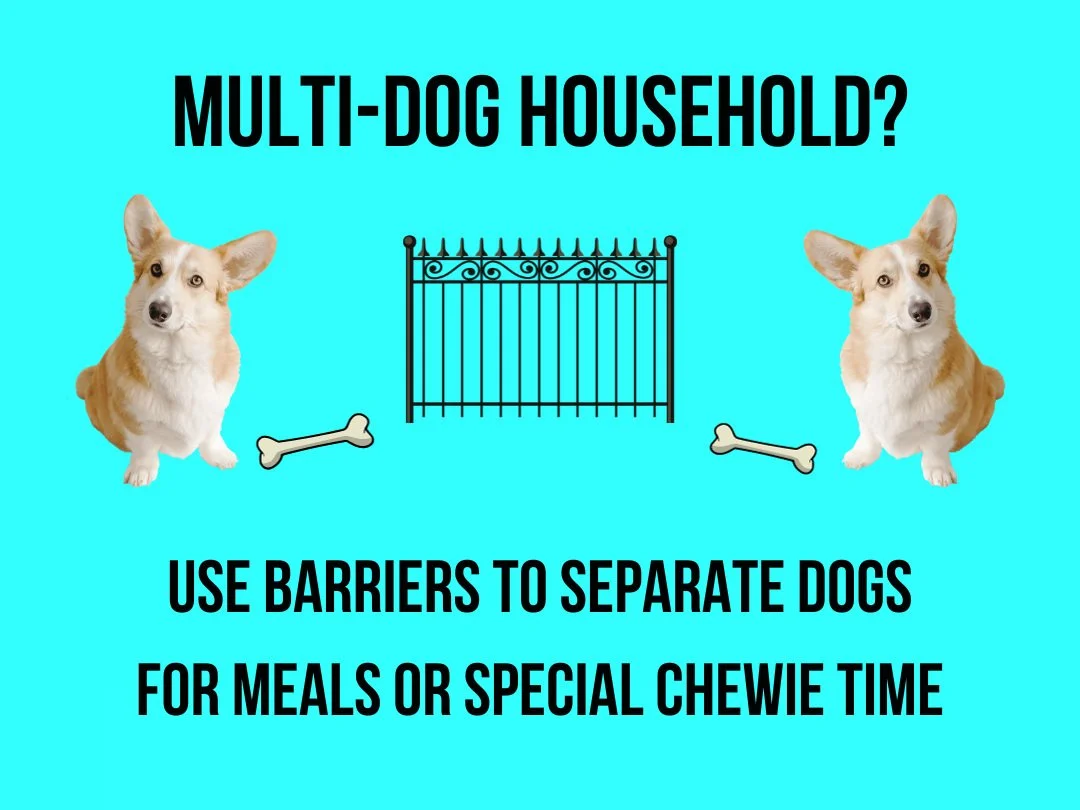Baby Gates aren’t just for babies. They can prevent jumping up, cat chasing and dog bites.
Are you worried about your dog's behavior with a cat, another dog in the home or visitors? Using barriers such as baby gates, ex-pens and closed doors can bring so much relief! Barriers as a management strategy can be an excellent move to increase safety, prevent rehearsal of unwanted behaviors, and reduce everyone's stress. Most dog trainers I know think of baby gates as an “of course!” but most clients I meet for the first time are new to the idea of using baby gates to manage dog behavior. Here are 3 examples of when baby gates can come in handy with your dog.
Cats deserve to have a space to retreat in a home where they will not be chased, injured or intimidated. Whether your dog has a history of aggression towards cats or not, I always recommend that a cat/dog household have cat-only areas.
Whether your dog is jumping up on visitors because they’re so excited to say hello or your dog is charging towards visitors barking because they are upset, barriers can help. For some dogs, you can teach new behaviors and change emotions about visitors through ongoing training. The first step is to setup management though, and barriers can make it impossible for your dog to do that unwanted behavior when guests come in the front door.
It is a great practice in multi-dog households for dogs to be separated at meal times and when high-value chew items like bully sticks or stuffed kongs are out. If your dog already has a history of resource guarding with food or chews, barriers are key for safety. But even without a history of aggression around food or chews, it’s an excellent pro-active choice to use barriers to prevent conflict before it has a chance to start. Give each dog a space where they can relax without competition.
Seeking customized support for dog training?




